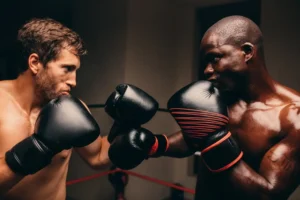Reflection
This guide will teach you how to create a reflective composition, use different lenses, camera settings, and create the perfect reflection shot.
Contents
What is Reflection Photography ?
So how do you define reflection
There are many great ideas for reflection photos, including using puddles, pools, sinks, lakes, and even raindrops. But don’t limit yourself to only using water for reflective surface ideas. You can also use mirrors, tiles, and other materials to easily work for a good reflection. Now let’s learn how to shoot reflective

How to Shoot Reflective Surfaces
When shooting reflections, there are certain things you should keep in mind if you want to capture and create a great composition. These are the best tips to help you photograph reflection
Wide Angle Lens
If you want to take better reflection photos, start by choosing the right
Focal Point
If you want to shoot reflections that capture an audience’s attention, it’s key that you set your focal point to the right location. Aim to set your focal point on the reflection itself instead of the thing you are reflecting on. This is especially helpful when shooting subjects such as the sun, sky, florals. Fine-tune your focus to create the most beautiful composition.

Longer Shutter Speed
Another great tool for shooting reflections is to use a long shutter speed, which works exceptionally well when shooting liquid subjects. Using a longer shutter speed and different angles will blur your reflective
Reduce Glare
In order to reduce the glare in your images, it’s important to shoot in the early morning. The sun will be lower in the sky and create less glare as well as prettier colors. Another way to reduce glare in your reflection photographs is to use a lens hood, use a polarizer, as well as working to find the right angle.

Aperture
Start with a wide aperture and slowly change your aperture until you find the sweet spot for your composition. You may want just a piece of your reflection in focus, or you may want the entire reflection in focus, and this is where you get to be the artist.
The Best Surfaces to Use for Reflections
As mentioned in the intro, there are many subjects that create great reflections. No matter your level of
Windows
To create beautiful reflections, start by shooting in windows. Windows are a great reflection starting point because they are easy to find and are usually full of light. Try a different scene each day in your homes, such as a reflection of yourself, pet, or other inspiration you find.
Shiny Surface
Reflection can be found on types of shiny surfaces. Experiment with different shiny surfaces such as a glass bottle, tea kettle, spoon, or Christmas ornament. Remember to use a long exposure and a tripod to get the clearest photos and set your aperture to f/16 to get everything in focus.
Water’s Surface
Water is one of the most popular surfaces for reflections. When taking reflective photos of a water scene, try to shoot in the early morning when the water is most still. Search for water will little to no movement to capture the best photos.

Sky
The sky is not reflective but looks incredible in reflective photos. Try to work the sky into your reflections, including looking for it on water or by bringing your own reflective surface and placing the sky inside.
Puddles or a Puddle
Puddles are one of my favorite types of reflection

Mirrors
If you want to create an interesting reflective image, try using a mirror. At the same time, change your perspective by getting low next to the mirror until you find the right view to frame the reflection.
Metal
As mentioned above, metal can create great reflections. Look at different types of metal such as cars, silverware, and jewelry. Keep an eye out for symmetry to create more interesting compositions.
6 Best Tips for Photographing Reflections
Here are some of the best tips to shoot reflections. Some may work for you, and some may not, but you should experiment with each to capture the best-reflected photos.
1. Choose the Best Angle
For better reflections, you must choose the best angle, which will change based on what you are shooting. But generally, you will need to set your camera to shoot down on the reflection. Move your camera until you find the sweet spot in your image. You want your reflection to fill the frame, sometimes including the subject and sometimes just the reflection itself.

2. Use a Polarising Filter
Invest in a filter to help expose your reflection at the same time as the light surrounding it. Often times the lighting is different in your reflections vs. the light around them. That’s why a polarizer can help even out your exposure.
3. Capture the Whole Scene
Reflections should be shot with the scene in mind. To make your

4. Focus on the Reflection
Carefully set your camera to focus mostly on the reflection. But as mentioned above, you may want to expose the whole scene as well. So it will be important to have a tripod for a long exposure to give you a higher aperture such as f/16.
5. Make use of the Foreground and Horizon
Your

6. Incorporate Movement
Movement makes any photo come to life. Try to photograph a person running through your image or a bird flying in your reflection. You may even consider pouring water onto your reflection. Reflections with movement in them are always more interesting.
Amazing Examples of Reflection Photography
Here are some reflected images to inspire your next image!
Symmetry in Reflections

Reflected Portraits

Reflected Waterfalls

Interesting Subject Matter

Conclusion
We hope you enjoyed this article about reflection









